Hello friends of Architecture+Design, it's the first time I'm here and I'm glad to be here. And I want to share with you about my visit to the historic center of Quito, I will develop a little about its history and construction.
Hola amigos de Architecture+Design, es la primera vez que estoy por acá y encantada de estarlo. Y quiero compartirles acerca de mi visita al centro histórico de Quito, desarrollare un poco sobre temas de su historia y construcción.
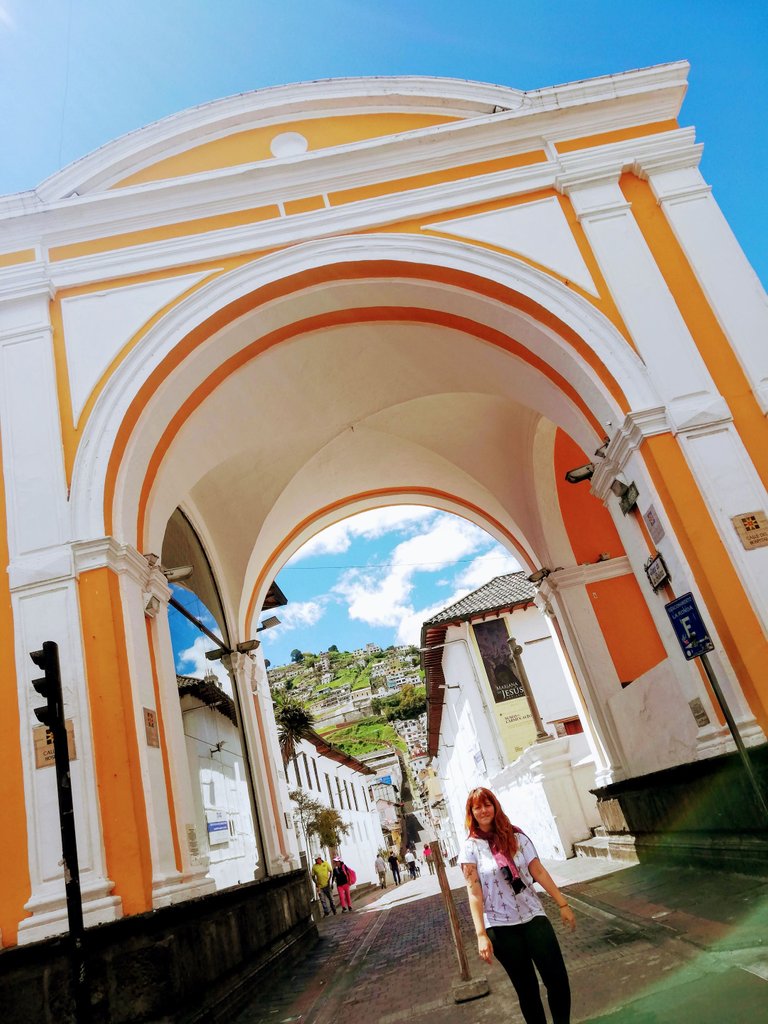
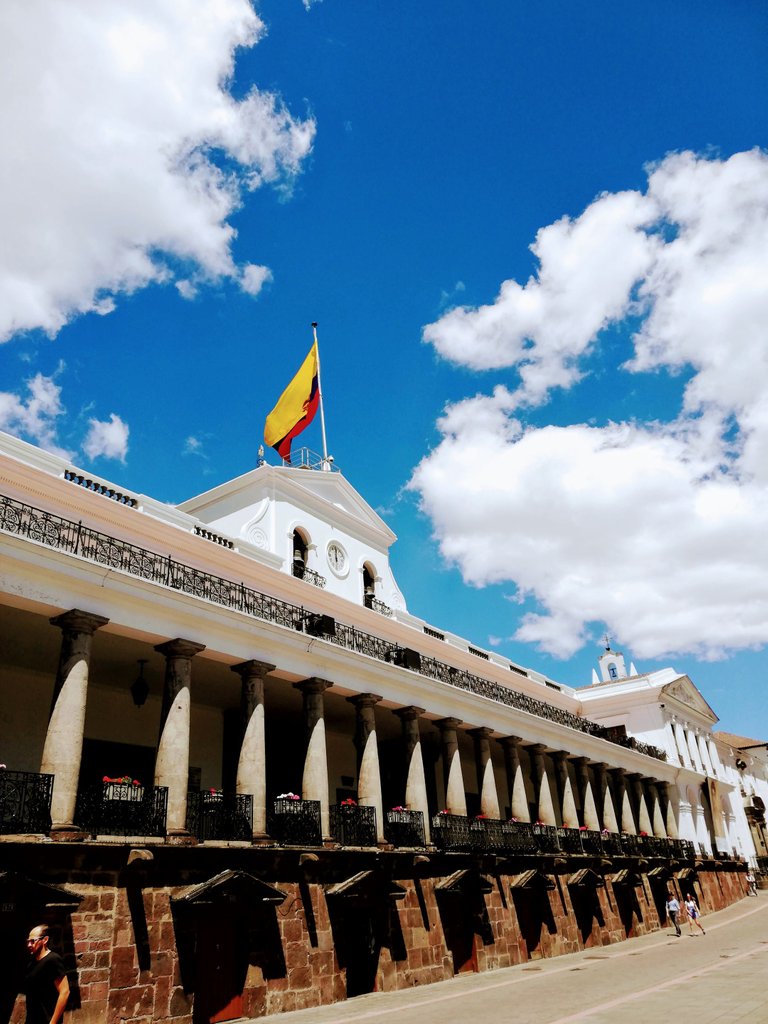
The historical center of Quito, is located in the south center of Quito and is considered the best preserved historical complex, has about 130 monumental buildings (where there is great diversity of art mainly of religious character inspired by a multifaceted range of schools and styles. And it has been, for four centuries, the most important symbolic space of the Ecuadorian nation.
El centro historia de Quito, se encentra al centro sur de Quito y es considerado el conjunto histórico mejor conservado, tiene alrededor de 130 edificaciones monumentales (Donde hay gran diversidad de arte principalmente de carácter religioso inspirado en una multifacética gama de escuelas y estilos. Y ha sido, desde hace cuatro siglos, el espacio de mayor importancia simbólica de la nación ecuatoriana.
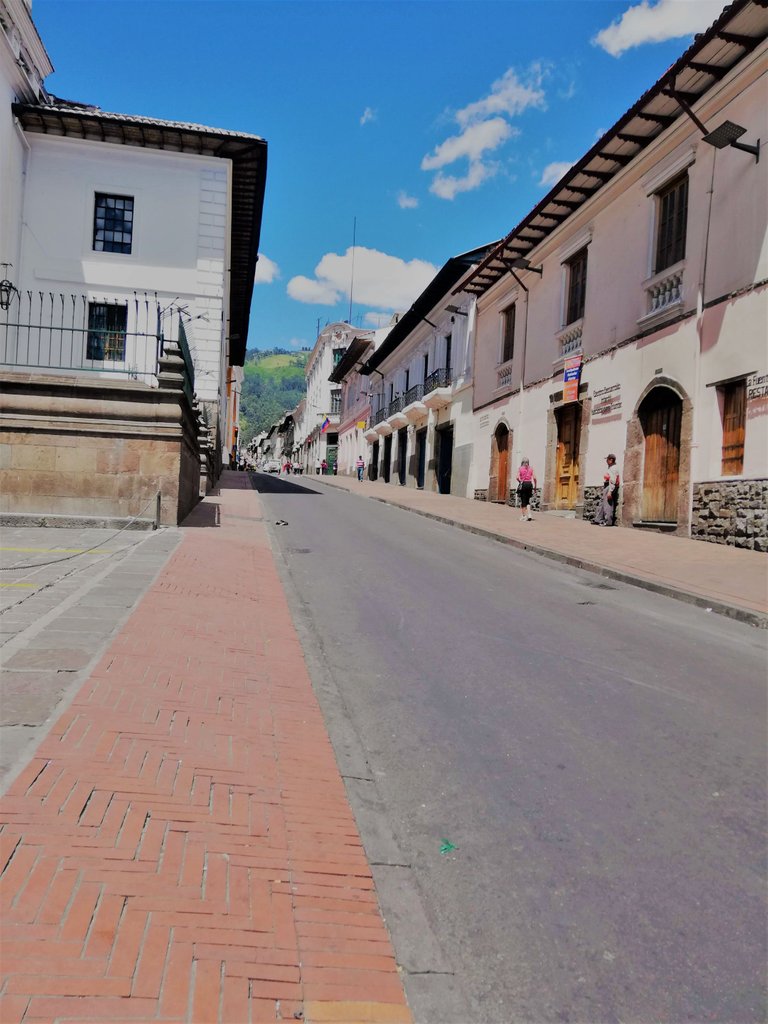
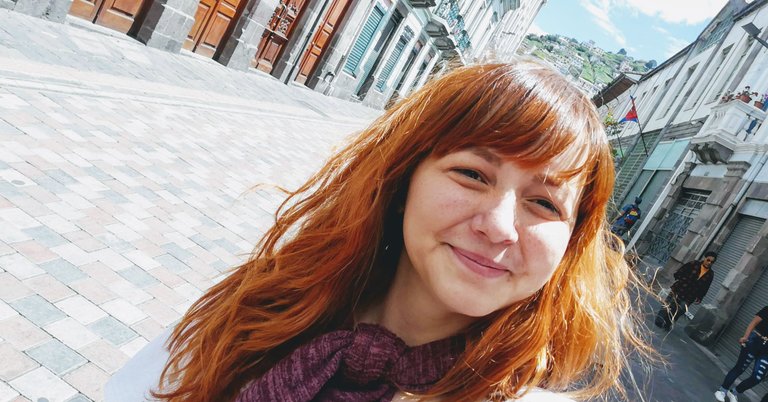
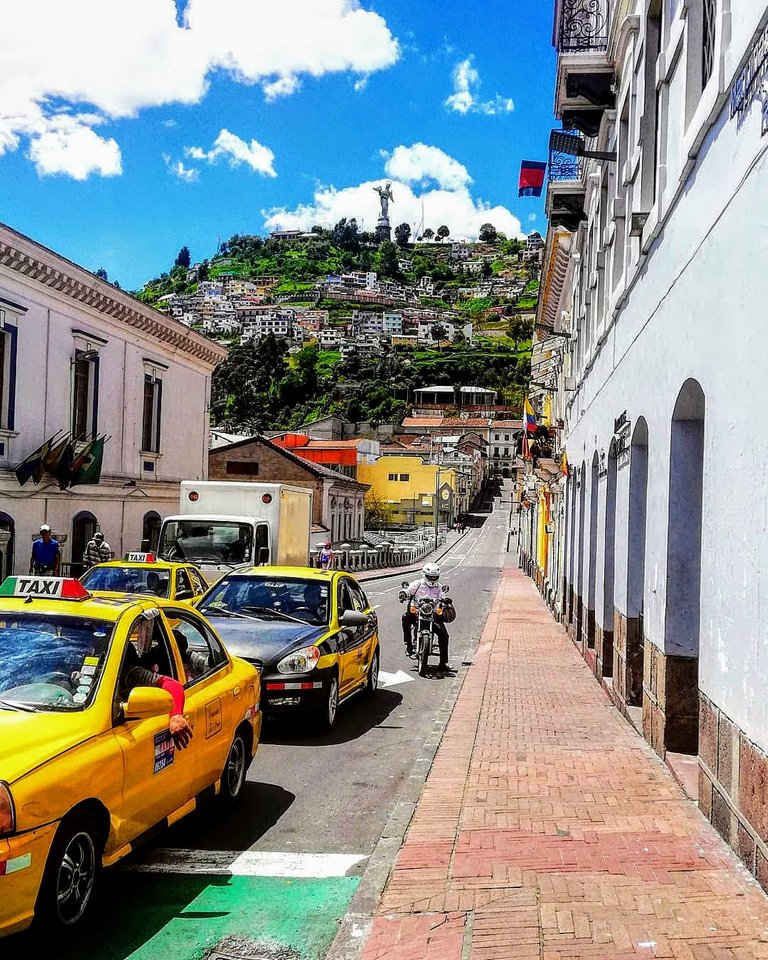
Basilica of the Voto Nacional
One of the most important works of Ecuadorian architecture. Religious temple was built to commemorate the consecration of the Sacred Heart of Jesus. It is 115 meters high and has 24 chapels inside representing the provinces of Ecuador. It was inaugurated and blessed by Pope John Paul II during his visit to Ecuador. Both for its structure and its style, it is compared to two great cathedrals of the world: the Basilica of Saint Patrick in New York and the Cathedral of Notre Dame in Paris.
A detail that distinguishes the work was to change the classic gargoyles for reptiles and amphibians of the Ecuadorian fauna. From the highest main point you can see part of the city of Quito more than all the south and the mountains part of the valley. The central part of the temple is 140 meters long, 35 meters wide and 30 meters high where there are 14 bronze images representing 11 apostles and 3 evangelists.
Basílica del Voto Nacional
Una de las obras más importante de la arquitectura ecuatoriana. Templo religioso fue edificado para recordar la consagración del Sagrado Corazón de Jesús, Tiene 115 metros de altura y tiene 24 capillas adentro representan a las provincias del Ecuador. Inaugurado y bendecido por el Papa Juan Pablo II en su visita al Ecuador. Tanto por su estructura como por su estilo, es comparada con dos grandes catedrales del mundo: la Basílica de Saint Patrick en Nueva York y la Catedral de Notre Dame en París.
Un detalle que distingue la obra fue en cambiar las clásicas gárgolas por reptiles y anfibios de la fauna ecuatoriana. Desde el punto más alto principal se puede ver parte de la ciudad de Quito más que todo el sur y las montañas parte del valle. La parte central del templo tiene 140 metros de largo, 35 de ancho y 30 de alto donde están 14 imágenes de bronce que representan 11 apóstoles y 3 evangelistas.
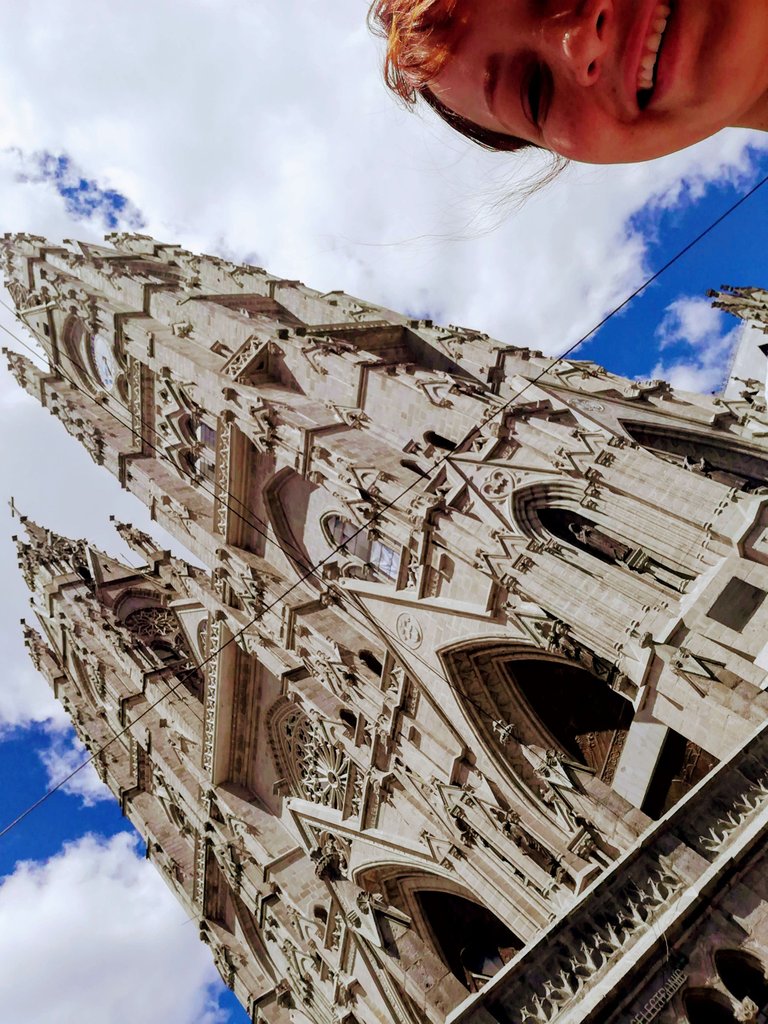
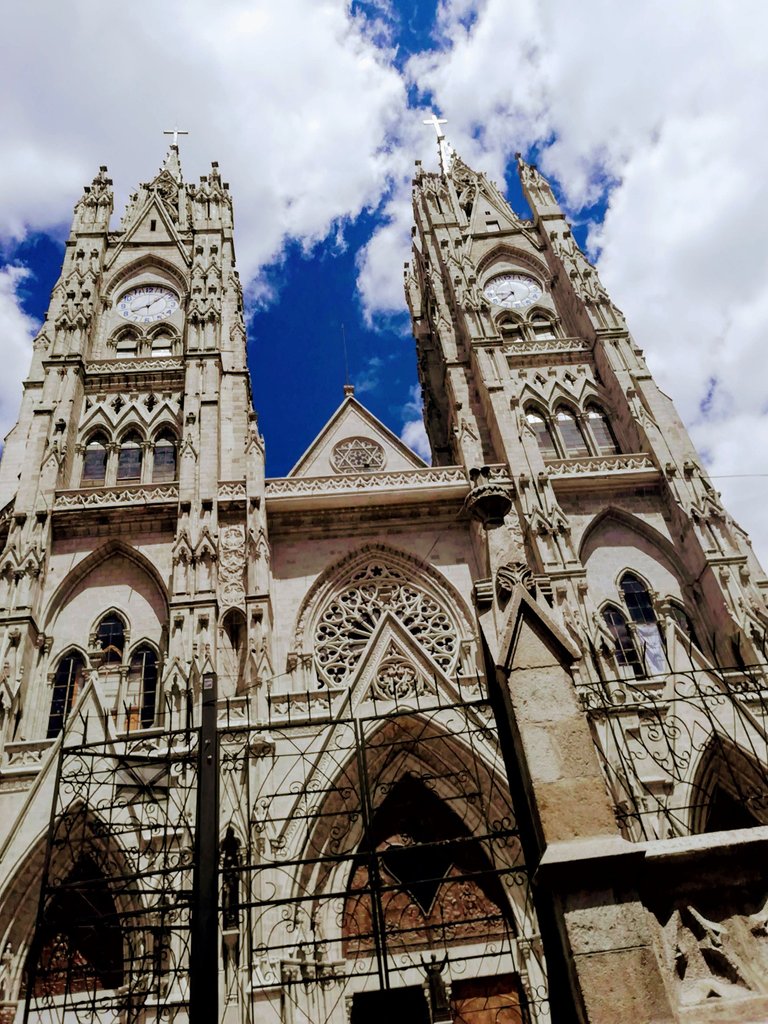
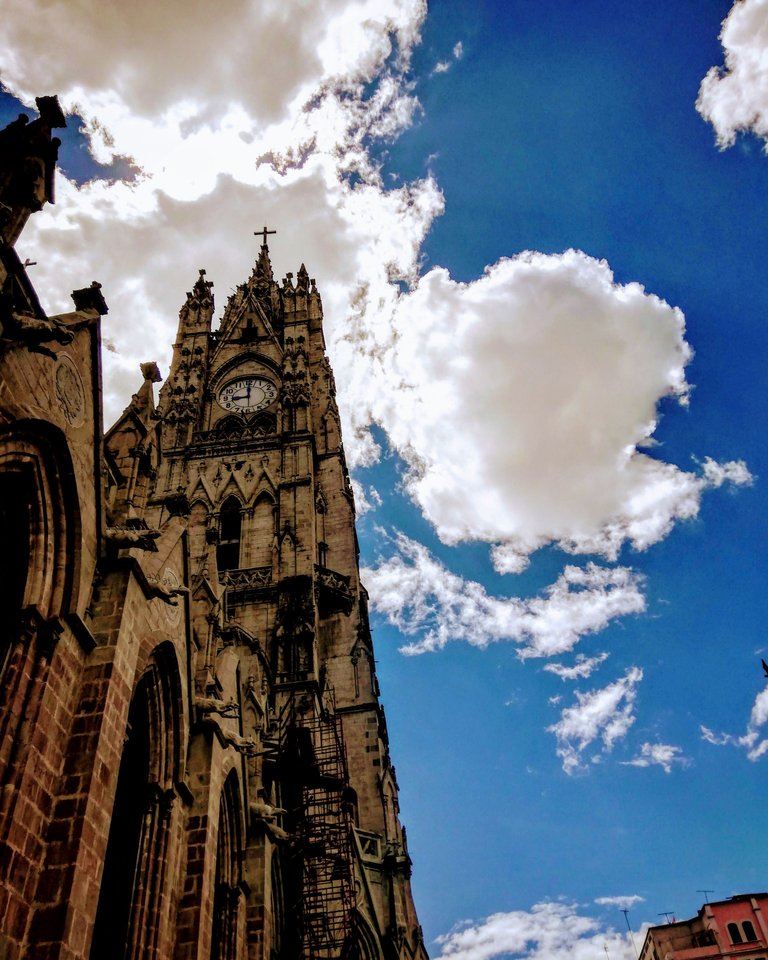
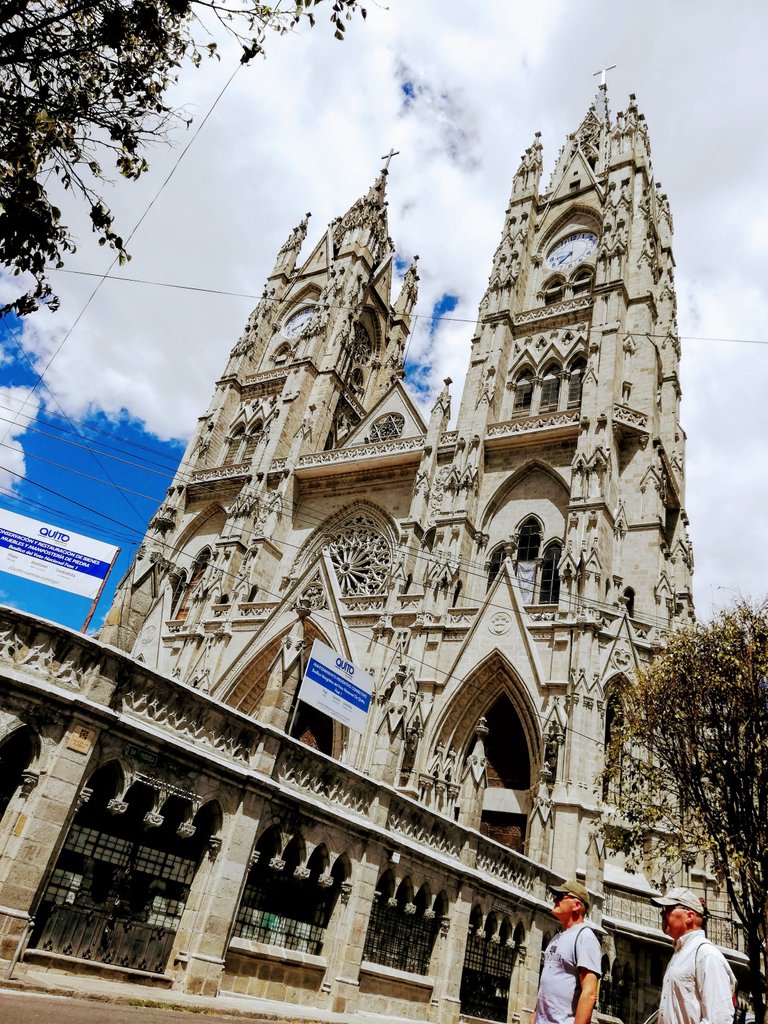
Metropolitan Cathedral
Located in the heart of the historical center, it is a catholic temple of major hierarchy in the country, it is very important for the Quiteño community and its major religious symbol.
The first construction was of adobe and wood with a thatched roof to house the faithful during the first decade. In January 1545 they officially began construction with better conditions and now makes this Cathedral the oldest in South America.
Catedral Metropolitana
Ubicado en el corazón de centro histórico, es un templo católico de mayor jerarquía en el país, es muy importante para la comunidad quiteña y su mayor símbolo religiosos.
La primera construcción fue de adobe y madera con un techo de paja para albergar a los fieles durante la primera década. En enero de 1545 iniciaron oficialmente la construcción con mejores condiciones y ahora la convierte a esta Catedral en la más antigua de Sudamérica.
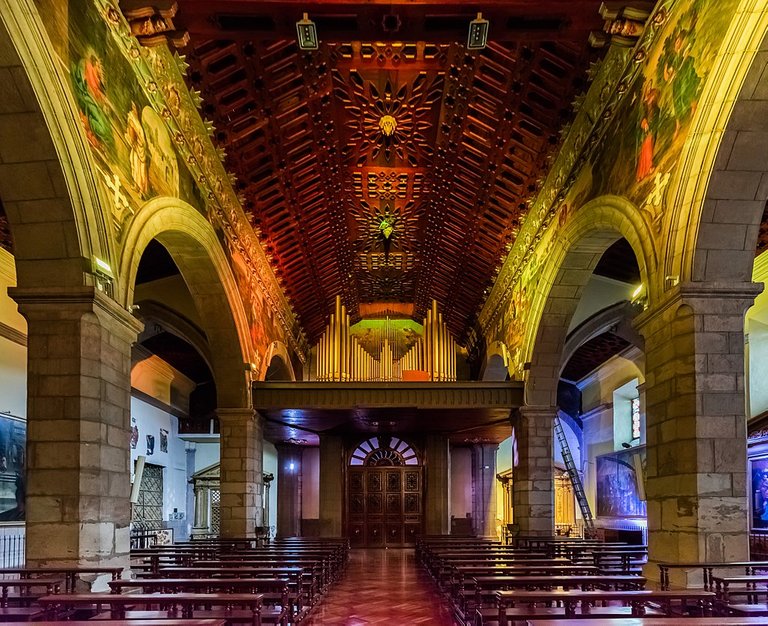
Fuente/Source
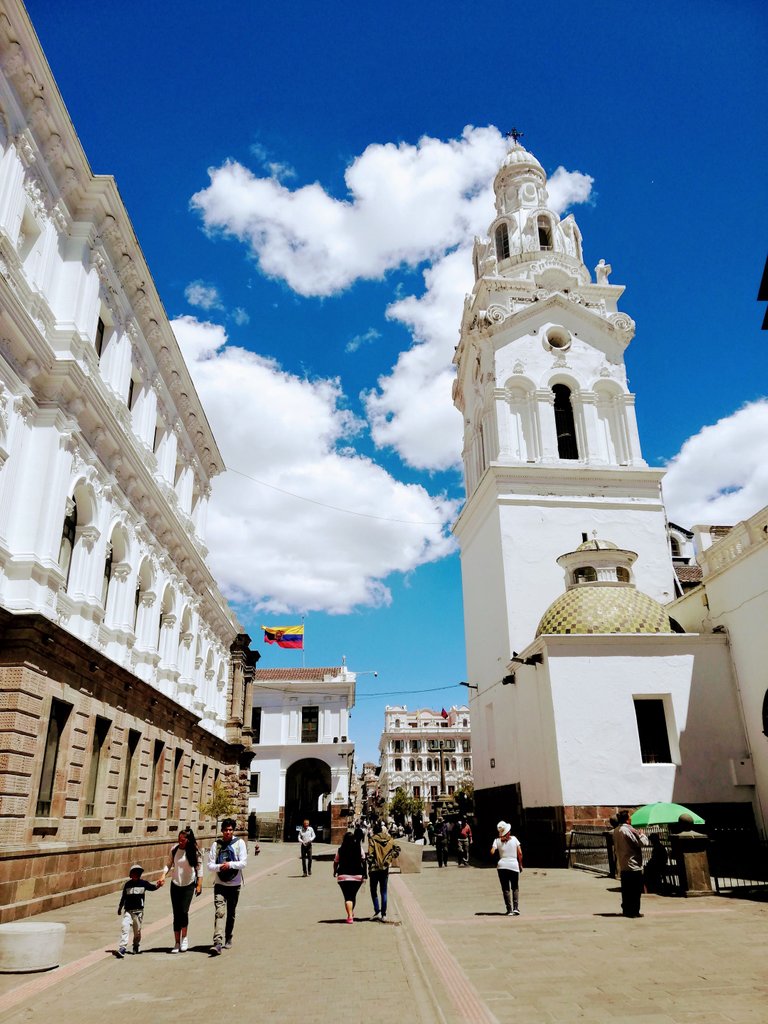
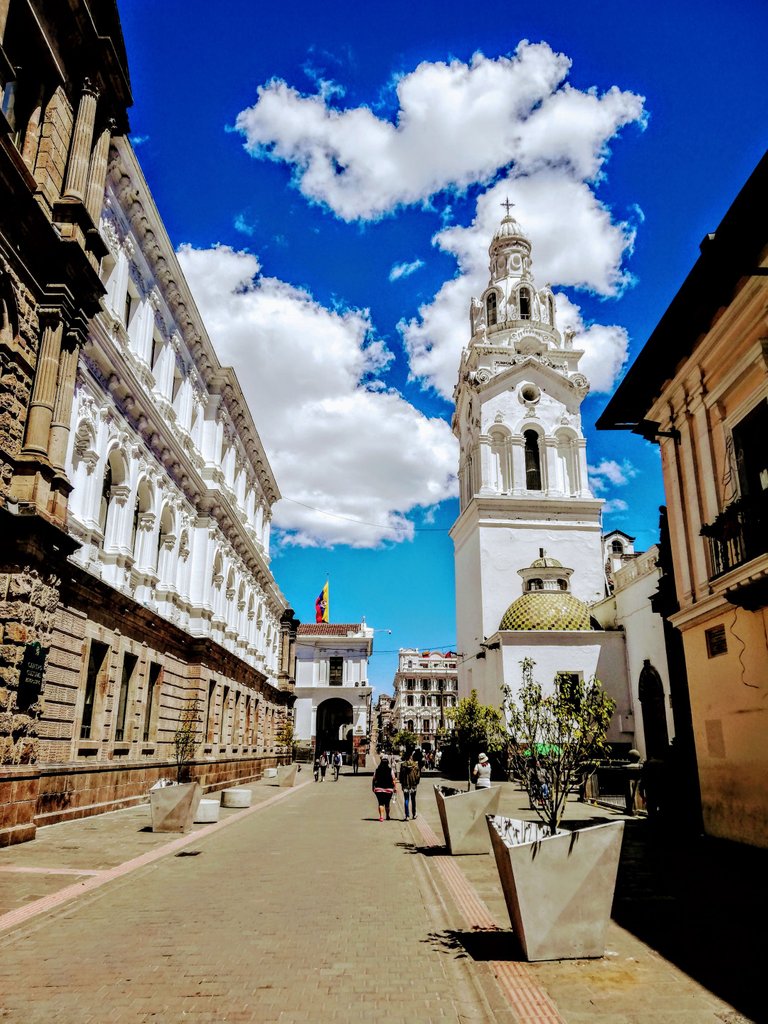
La Compañía Church
The church La Compañía de Jesús de Quito, also known as La Compañía, is a catholic complex. The façade of its main temple is carved entirely in volcanic andesite stone and is considered one of the most important of baroque architecture in the Americas.
Its beautiful internal decoration is completely covered with gold leaf, and I think that makes it very striking for tourists really is the biggest tourist attraction of the city, an unparalleled heritage both artistically and economically for the country.
It was also visited by Pope John Paul II, its construction began in 1605 and lasted 160 years to be finished, at the end of 1765 all the construction was completed and was officially inaugurated in the same year, most of its construction was done by indigenous people following the plans of the European Jesuits, they so carefully captured the baroque style, that style is one of the most complex in the art of America.
Iglesia de La Compañía
La iglesia La Compañía de Jesús de Quito, también conocida como La Compañía, es un complejo católico. La portada de su templo Mayor es labrada totalmente en piedra volcánica andesita y está considerada como una de las más importantes de la arquitectura barroca en el continente americano.
Su hermosa decoración interna está totalmente cubierta con láminas de oro, y creo que la hace muy llamativa para los turistas realmente es l mayor atracción turísticas de la ciudad, un patrimonio inigualable tanto artístico como económico para el país.
También fue visitada por el Papa Juan Pablo II, inicio su construcción en el año de 1605 y duro 160 años para poder ser terminada, al final del año 1765 se terminó toda la construcción y fue inaugurada oficialmente en ese mismo año, la mayoría de su construcción fue hecha por indígenas siguiendo los planos de los jesuitas europeos, ellos plasmaron con tanto cuidado el estilo barroco, ese estilo es uno de los mas complejos en el arte de América.
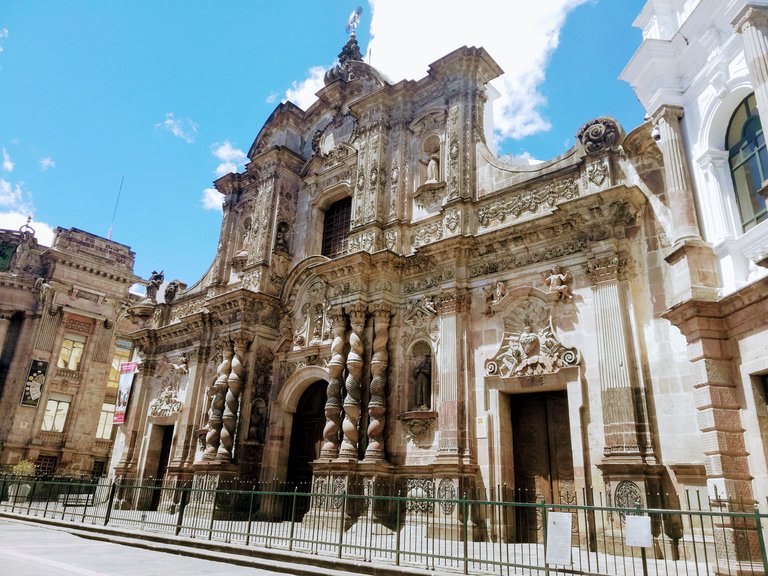
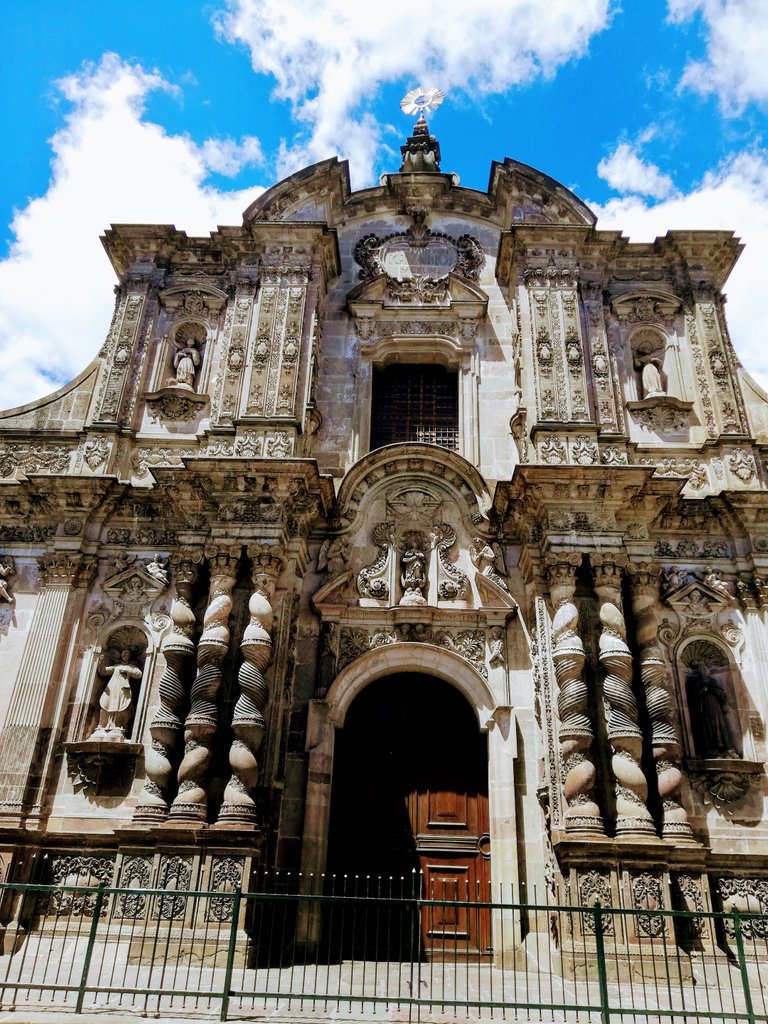
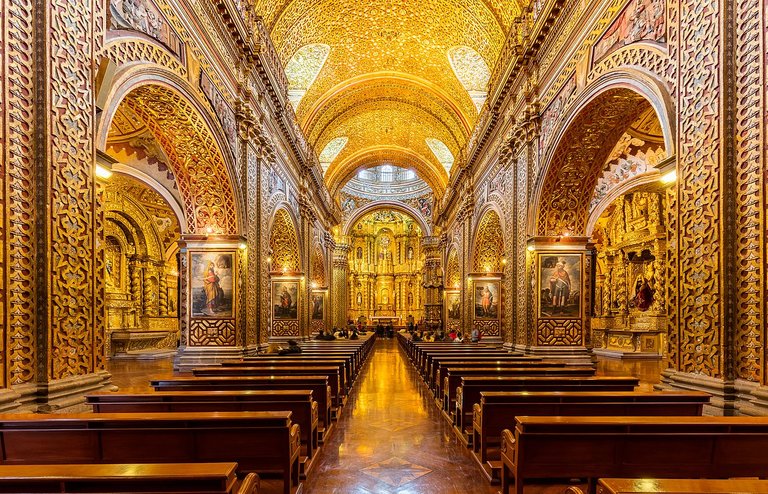
Fuente/Source
The Church of San Francisco
It is the largest of the architectural complexes in the historic center of the city. The construction of the church began in 1550, on a piece of land around the square where the Indians used to barter, and was completed in 1680.
There is a legend about this construction and it is that an Indian named Cantuña was committed to build the church and agreed that the time to finish it was very short and the Indian was not going to be able to finish it in the promised time, so when he saw that he was losing he made a pact with the Devil. In exchange he asked for his soul and the Indian Cantuña accepted the deal. The devils began all the construction work, which only lasted one night. When the work was finished, the Indian prayed to the Virgin to help him and save his soul from being taken by the devil and when Lucifer came to get what he had promised, he simply discovered that he was missing a brick to finish and therefore the pact was annulled. In this way he saved his soul.
La Iglesia de San Francisco
Es el más grande de los conjuntos arquitectónicos que hay en el centro histórico de la ciudad. La construcción de la iglesia empezó en el 1550, en un terreno alrededor de la plaza donde los indígenas realizaban sus trueques y se finalizó en 1680.
Hay una leyenda sobre esta construcción y es que un indio de apellido Cantuña se comprometió a construir la iglesia y acordó el tiempo de terminar era muy corto y el indio no iba a poder terminarla en el tiempo prometido, así que al ver que estaba perdiendo hizo un pacto con el Diablo. A cambio le pidió su alma y el indio Cantuña aceptó el trato. Los diablillos comenzaron toda la obra de la construcción que sólo duró una noche. Cuando ya terminó la obra, el indio le rezó a la Virgen para que lo ayudara y lo salvara de que su alma fuera llevada por el diablo y cuando Lucifer vino a buscar lo prometido, simplemente descubrió que faltaba un ladrillo para terminar y por lo tanto el pacto quedó anulado. De esta manera así salvo su alma.

Fuente/Source
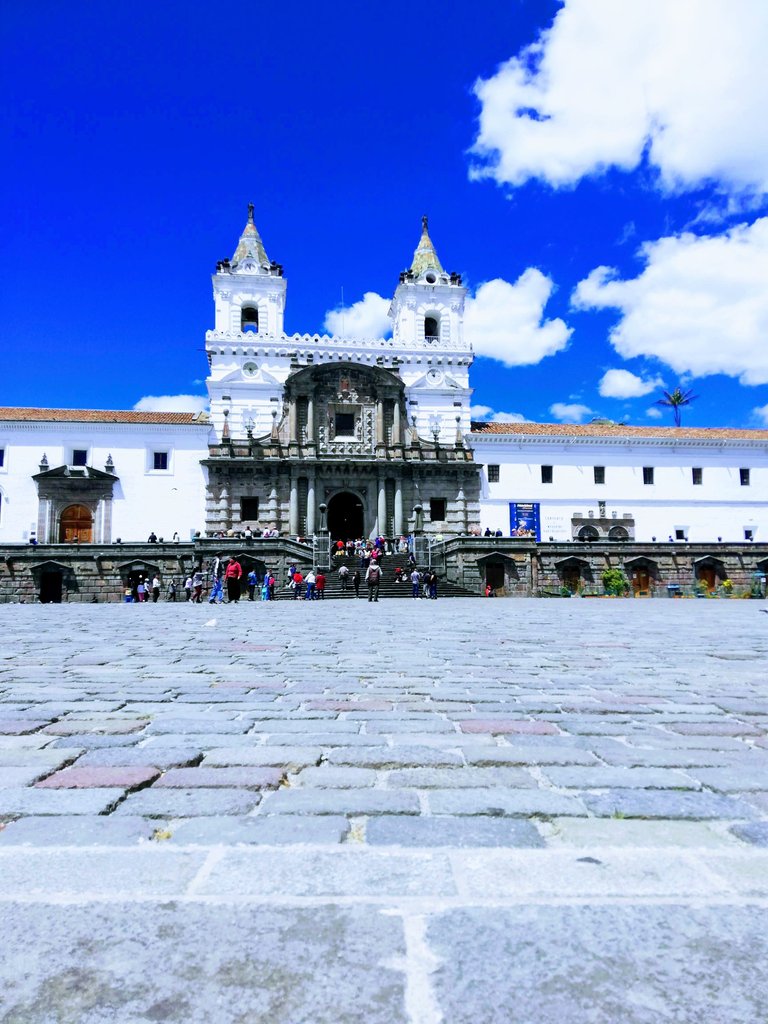

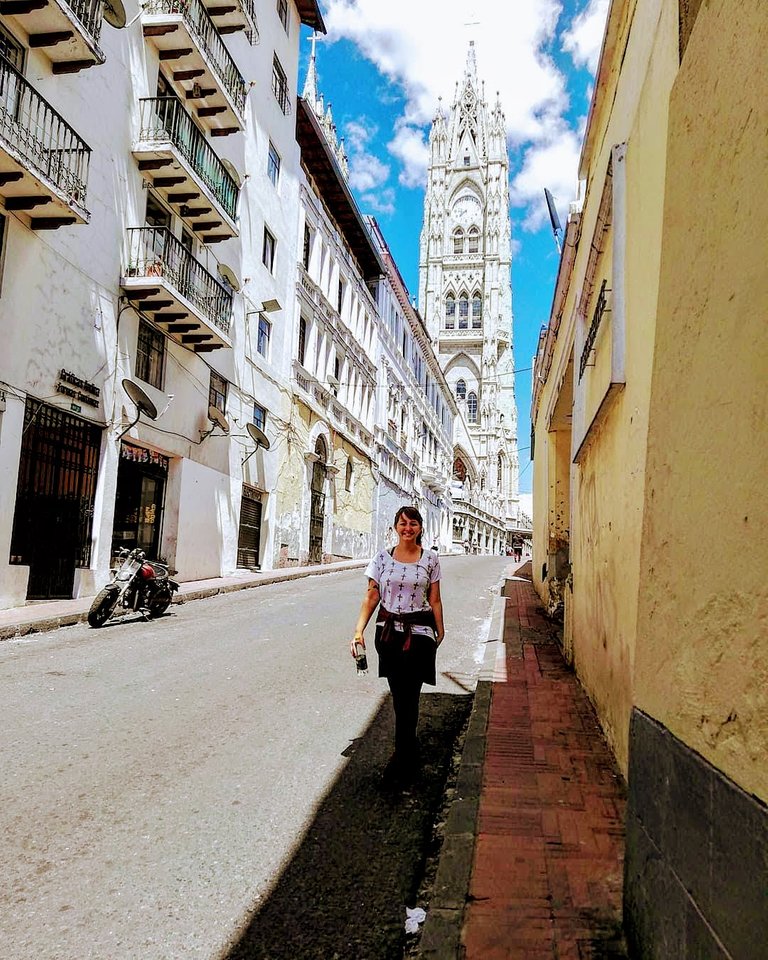
All the photos in this post are of my authorship except those that have their respective source.
Todas las fotos presentes en éste post son de mi autoría excepto aquellas que tienen su respectiva fuente.






















